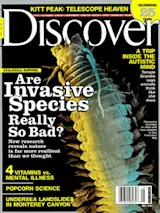This month marks the widely celebrated centennial of Albert Einstein’s special theory of relativity, which he began developing in May of 1905. It is also the anniversary of a less famous—yet even more momentous—Einstein event. On May 29, 1919, astronomers observing a solar eclipse provided the initial confirmation of his second and grander relativity theory, called general relativity. This theory holds that gravity is not really a force but more like a warp in the structure of space and time. Eighty-six years later, scientists are still grappling with this wildly counterintuitive idea.
From the start Einstein knew that verifying general relativity would not be easy. Under most conditions, gravitational effects would be subtle at best. In 1911, while in the early stages of developing the theory, he thought of a possible observable consequence: Gravity should bend light. The powerful pull of the sun, for instance, should slightly shift the path ...














